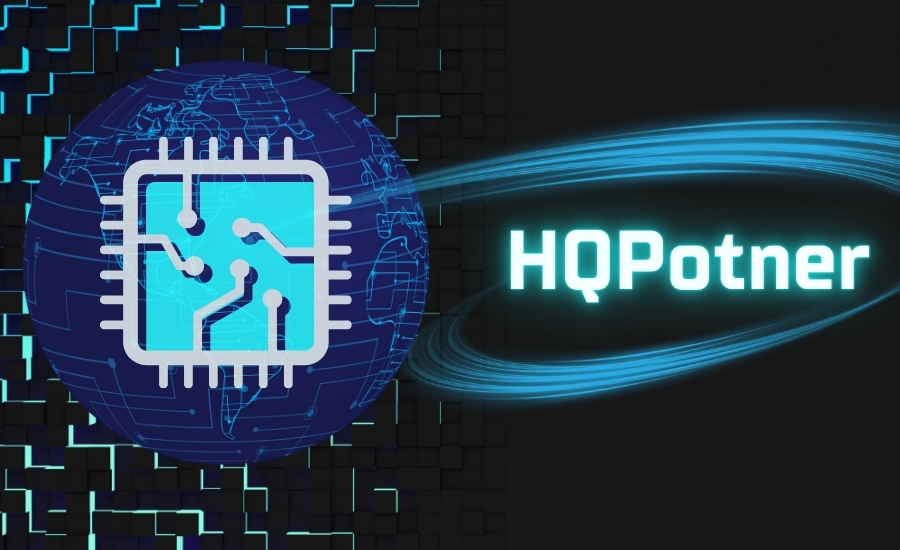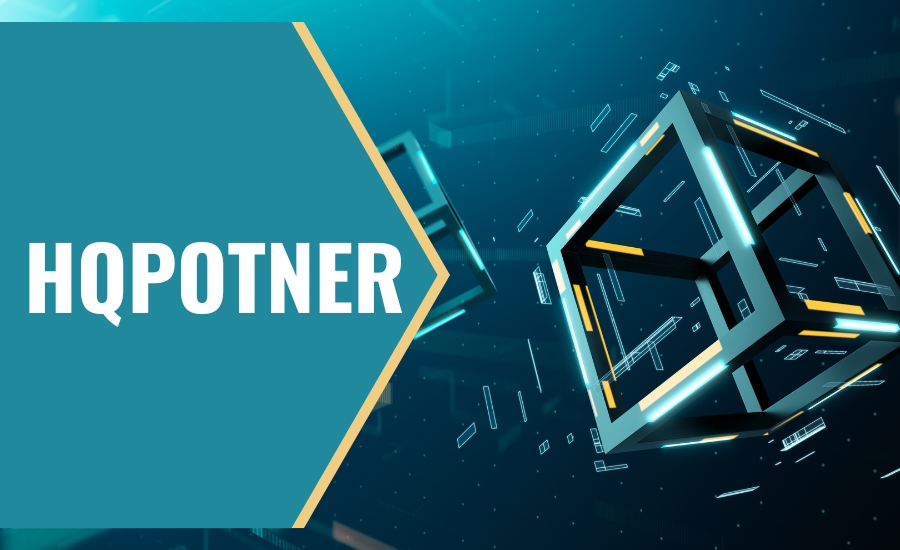HQPotner represents a groundbreaking advancement in technology, revolutionizing how various sectors approach data security and management. Central to HQPotner is its advanced platform designed for the secure storage, processing, and retrieval of sensitive data. The inception of HQPotner can be traced back to the early 2010s, a period marked by increasing cybersecurity threats that demanded more sophisticated solutions.
Since then, HQPotner has continually evolved, embracing innovations such as artificial intelligence and machine learning. This ongoing development has established HQPotner as a top choice for businesses and organizations committed to protecting their data. For newcomers, understanding the fundamentals of HQPotner is essential as it provides a base for delving into its more advanced features and capabilities. This guide offers a thorough introduction to HQPotner, detailing its core principles, key elements, and the advantages it provides to its users.
What Is HQPotner?
HQPotner is a sophisticated software platform crafted to deliver exceptional data security and management solutions. It leverages cutting-edge technologies such as encryption, multi-factor authentication, and real-time monitoring to protect sensitive information effectively. Organizations across diverse sectors, including finance, healthcare, and government, utilize HQPotner to secure critical data and comply with regulatory requirements. The platform’s user-friendly interface and extensive features make it a preferred solution for businesses aiming to bolster their cybersecurity defenses and optimize data management practices.
History and Evolution of HQPotner
HQPotner’s development began in the early 2010s in response to the increasing demand for improved data security amidst escalating cyber threats. Initially, the platform concentrated on fundamental encryption and access control measures. However, as cybersecurity challenges grew more sophisticated, HQPotner advanced by incorporating technologies such as artificial intelligence and machine learning. This integration significantly enhanced its capabilities. Through ongoing innovation, HQPotner has introduced new features and improvements, establishing itself as a premier data security solution. Today, HQPotner is celebrated for its reliability, advanced functionalities, and adaptability to the continuously evolving cybersecurity landscape.
Setting Up HQPotner: Step-By-Step Guide for HQPotner Installation

Setting up HQPotner involves a series of steps to ensure a seamless installation. Here’s a detailed guide to help you through the process:
System Requirements for HQPotner
To ensure HQPotner operates effectively, your system must meet specific requirements:
- Operating System: Windows 10, macOS 10.15, or a recent Linux distribution
- Processor: Multi-core processor
- Memory: At least 8 GB of RAM
- Storage: Minimum of 500 GB free disk space
Meeting these requirements guarantees that HQPotner will run smoothly and efficiently, providing an optimal user experience.
Downloading and Installing HQPotner
- Check System Requirements: Before installation, confirm that your system meets the necessary requirements.
- Download HQPotner: Visit the official HQPotner website and download the latest version of the software. Ensure you select the version compatible with your operating system.
- Run the Installer: Once downloaded, open the installation file. The installation wizard will guide you through the process with a series of prompts.
- Initial Setup: During the installation, you will be prompted to configure initial settings:
- User Accounts: Create user accounts with appropriate access levels.
- Security Protocols: Set up security measures such as passwords and encryption settings.
- Complete Installation: Follow the remaining prompts to complete the installation. A system reboot is recommended to ensure all components are properly integrated.
- Post-Installation Configuration: After rebooting, you can further configure HQPotner to suit your specific needs. This includes setting up additional security protocols and customizing user settings.
By following these steps, you can swiftly set up HQPotner and begin leveraging its robust features to enhance your data security and management capabilities.
System Requirements for HQPotner
To ensure optimal performance, HQPotner has specific system requirements. These include a modern operating system such as Windows 10, macOS 10.15, or a recent Linux distribution. The hardware specifications typically require a multi-core processor, at least 8 GB of RAM, and a minimum of 500 GB of free disk space. Meeting these system requirements is crucial for ensuring that HQPotner runs smoothly and efficiently, providing users with the best possible experience.
Downloading and Installing HQPotner
- Download the Software: Navigate to the official HQPotner website to download the latest version of the software. Ensure that you select the correct version for your operating system.
- Run the Installer: Open the downloaded file to begin the installation process. The installation wizard will guide you through each step.
- Initial Setup: During installation, you will need to set up initial configurations, such as user accounts and security settings.
- Complete the Installation: Follow the on-screen instructions to complete the installation. It is recommended to reboot your system after the installation to ensure all components are properly configured.
HQPotner Interface: Navigating the HQPotner Dashboard
The HQPotner interface is designed with user-friendliness in mind, ensuring that navigating the dashboard and accessing its various features is straightforward. Here’s a detailed look at how to effectively use the HQPotner dashboard:
Key Features of the HQPotner Interface
The HQPotner interface offers a centralized dashboard that provides a comprehensive overview of your system’s status, data analytics, and security alerts. Key features include:
- Centralized Dashboard: A single view that displays system status, data insights, and security notifications.
- User Permissions Management: Tools for controlling and managing user access levels.
- Security Settings Configuration: Options to set up and adjust security protocols.
- Real-Time Monitoring: Continuous monitoring of system performance and security status.
- Customizable Widgets: Ability to add, remove, or rearrange widgets for a tailored view.
- Data Analytics Tools: Insights into data trends and patterns for better decision-making.
These features empower users to efficiently manage data security and system performance, ensuring all necessary information and controls are easily accessible.
Customizing Your HQPotner Dashboard
Customizing the HQPotner dashboard allows users to personalize their interface according to their specific needs. Here’s how you can customize your dashboard:
- Adding Widgets: Select from a range of widgets that display various types of information such as security alerts, performance metrics, and data analytics.
- Removing Widgets: Remove any widgets that are not relevant to streamline your view.
- Rearranging Widgets: Drag and drop widgets to arrange them in a layout that best suits your workflow.
- Adjusting Color Schemes: Modify the color scheme to enhance visibility and user comfort.
- Setting Layout Preferences: Choose from different layout options to optimize the dashboard’s usability.
By customizing the dashboard, users can ensure that the most critical data and tools are immediately accessible, which enhances efficiency and productivity.
Navigating the HQPotner Interface
Understanding how to navigate the HQPotner interface is crucial for maximizing its capabilities:
- Dashboard Overview: Start with the centralized dashboard for a quick overview of system status, data analytics, and security alerts.
- Accessing Tools: Use the navigation menu to access tools for managing user permissions, configuring security settings, and monitoring system performance.
- Utilizing Widgets: Interact with widgets to view detailed information and take necessary actions based on real-time data.
- Customizing Views: Tailor your dashboard view by adding, removing, or rearranging widgets to display the most pertinent information.
HQPotner Security: Ensuring Safety with HQPotner

Security is paramount for HQPotner, which offers a variety of features designed to protect data from unauthorized access and cyber threats. By leveraging advanced security settings and following best practices, users can ensure their data is well-protected and compliant with industry standards.
HQPotner Security Settings
HQPotner provides a comprehensive array of security settings to safeguard data:
- Multi-Factor Authentication (MFA): Requires users to provide multiple forms of verification to gain access, enhancing account security.
- Encryption: Ensures that data is securely stored and transmitted, making it unreadable to unauthorized parties.
- Access Controls: Allows users to define who can view or modify specific data, ensuring that only authorized personnel have access.
- Regular Security Updates: Addresses vulnerabilities and enhances the system’s defenses by regularly updating the software.
Configuring these settings according to specific security requirements can significantly enhance data protection.
Best Practices for HQPotner Security
Implementing best practices for HQPotner security is crucial for maintaining a secure environment. Key practices include:
- Regular Software Updates: Ensure that the software is always up-to-date with the latest security patches and features.
- Monitoring Access Logs: Regularly review access logs to identify and investigate any suspicious activities.
- Periodic Security Audits: Conduct thorough security audits to identify potential vulnerabilities and areas for improvement.
- Strong Password Policies: Enforce the use of strong, unique passwords for all user accounts.
- Employee Education: Educate employees about phishing attacks and other cyber threats to enhance their awareness and preparedness.
By following these best practices, organizations can significantly bolster their data security and reduce the risk of cyber incidents.
Don’t Miss: Index.php/2024/08/02/Humanilex
Implementing HQPotner Security Measures
Understanding and implementing HQPotner’s security measures is essential for protecting sensitive information and mitigating risks. Here’s how to effectively use HQPotner’s security features:
- Enable Multi-Factor Authentication: Activate MFA for all user accounts to add an extra layer of security.
- Set Up Encryption: Ensure that all data stored and transmitted through HQPotner is encrypted.
- Configure Access Controls: Define and manage permissions to restrict access to sensitive data.
- Apply Regular Updates: Keep the HQPotner software updated to benefit from the latest security enhancements.
- Monitor and Audit: Regularly check access logs and conduct security audits to detect and address potential issues promptly.
HQPotner Configuration: Customizing HQPotner to Your Needs
Customizing HQPotner involves configuring a variety of settings to tailor the software to your specific requirements. By adjusting these options, users can enhance the functionality and efficiency of HQPotner, ensuring it meets their unique needs. This guide provides detailed instructions on how to configure HQPotner, enabling users to leverage the software to its full potential.
HQPotner Configuration Options
HQPotner offers a broad range of configuration options designed to meet diverse user needs:
- User Permissions: Set and manage user access levels to ensure that only authorized personnel can access sensitive data.
- Data Access Levels: Define who can view, edit, or delete specific data, enhancing security and control.
- Network Settings: Configure network parameters to optimize connectivity and performance.
- Performance Settings: Adjust settings to optimize the software’s performance based on your specific use case.
- Automated Workflows: Set up workflows to automate repetitive tasks and streamline processes.
- API Access: Configure API settings to allow integration with other tools and platforms.
- Third-Party Integrations: Integrate HQPotner with other applications to expand its capabilities.
By exploring these configuration options, users can create a customized HQPotner setup that improves efficiency and meets their specific needs.
Advanced HQPotner Settings
For users seeking more granular control, HQPotner provides advanced settings that allow for deeper customization:
- API Access Configuration: Enable integration with other tools by setting up API access, facilitating seamless data exchange and automation.
- Automated Workflow Setup: Create and manage workflows to automate tasks, reducing manual intervention and improving productivity.
- Security Protocols Adjustment: Customize security settings to enhance data protection, including advanced encryption and multi-factor authentication.
- Performance Tuning: Fine-tune performance settings to optimize the use of system resources and improve the speed and efficiency of HQPotner.
Understanding and utilizing these advanced settings allows users to fully exploit HQPotner’s capabilities, creating a highly tailored and efficient data security solution.
Customizing HQPotner: Step-by-Step Guide
To customize HQPotner effectively, follow these steps:
- Set User Permissions: Navigate to the user management section and define access levels for each user, ensuring that permissions align with their roles.
- Define Data Access Levels: Specify which data each user or group can access, edit, or delete, enhancing data security.
- Configure Network Settings: Adjust network settings to ensure optimal connectivity and performance.
- Optimize Performance Settings: Tweak performance settings to match your specific use case, ensuring that HQPotner runs smoothly and efficiently.
- Set Up Automated Workflows: Create workflows to automate repetitive tasks, improving efficiency and reducing the chance of human error.
- Configure API Access: Set up API access to enable integration with other tools, enhancing HQPotner’s capabilities.
- Integrate Third-Party Applications: Connect HQPotner with other applications to expand its functionality and streamline your workflow.
HQPotner Integration: Connecting HQPotner with Other Tools
Integrating HQPotner with other tools significantly enhances its functionality and streamlines workflows. By leveraging the HQPotner API, users can connect the software with various third-party applications, such as data analytics tools, CRM systems, and cloud storage services. This integration enables seamless data transfer and synchronization, improving efficiency and reducing manual efforts. This guide will help you understand how to connect HQPotner with other tools to maximize its potential.
HQPotner API Integration
HQPotner’s API integration allows users to seamlessly connect the software with various third-party applications, enhancing data transfer and overall functionality. Key points include:
- Data Analytics Tools: Integrate with platforms like Tableau or Power BI for advanced data visualization and insights.
- CRM Systems: Connect with CRM systems such as Salesforce to streamline customer data management.
- Cloud Storage Services: Sync with services like Google Drive, Dropbox, or AWS for secure and scalable data storage.
To set up HQPotner API integration:
- Access API Documentation: Review the API documentation provided by HQPotner to understand the endpoints, methods, and authentication requirements.
- Configure API Settings: Navigate to the API settings in HQPotner and generate API keys or tokens for authentication.
- Set Up Third-Party Integration: Follow the integration steps outlined by the third-party application, using the API keys or tokens generated.
- Test Integration: Perform test operations to ensure data is transferring correctly and the integration is functioning as expected.
By configuring these settings, users can create a comprehensive data management and security solution tailored to their specific needs.
Syncing HQPotner with Third-Party Applications
Syncing HQPotner with third-party applications involves configuring settings to enable seamless data exchange and integration. This process typically includes:
- Setting Up API Access: Generate and configure API keys or tokens to allow secure access.
- Defining Data Mapping Rules: Establish rules for how data should be mapped and synchronized between HQPotner and the third-party application.
- Ensuring Proper Authentication: Implement authentication mechanisms to ensure secure data transfer.
To sync HQPotner with other applications:
- Select the Application: Choose the third-party application you want to integrate with HQPotner.
- Generate API Credentials: In HQPotner, generate the necessary API credentials (keys/tokens) required for integration.
- Configure Data Mapping: Define how data fields in HQPotner correspond to fields in the third-party application.
- Implement Authentication: Ensure that proper authentication mechanisms are in place to secure the data exchange.
- Test and Validate: Conduct thorough testing to verify that data synchronization is working correctly and that all functionalities are operating smoothly.
Integrating HQPotner with CRM systems, data analytics platforms, and cloud storage services enhances its functionality, allowing for automated workflows and real-time data updates. By leveraging these integrations, users can streamline their operations, reduce manual effort, and improve overall efficiency.
Troubleshooting HQPotner: Common HQPotner Issues and Solutions

Troubleshooting common HQPotner issues involves identifying potential problems and implementing effective solutions. Diagnosing HQPotner errors typically involves reviewing system logs, checking configuration settings, and verifying network connectivity. Common issues users may encounter include installation errors, performance degradation, and security alerts. Resolving these problems requires a systematic approach, such as updating the software, adjusting configuration settings, and applying security patches. Users can also access HQPotner support resources, such as online forums, knowledge bases, and customer support, to find solutions to specific issues. By understanding common HQPotner issues and their solutions, users can quickly address problems and ensure the software operates smoothly. This guide provides practical troubleshooting tips and techniques to help users resolve issues and maintain optimal performance.
Diagnosing HQPotner Errors
Diagnosing HQPotner errors involves identifying the root cause of issues and implementing appropriate solutions. Here are some steps to help diagnose common errors:
- Review System Logs: Check HQPotner’s system logs for any error messages or warnings that can provide clues about the issue.
- Check Configuration Settings: Ensure that all configuration settings are correctly set up. Misconfigurations can often lead to errors.
- Verify Network Connectivity: Confirm that your network connection is stable and that HQPotner can communicate with necessary servers and services.
- Utilize Diagnostic Tools: Use HQPotner’s built-in diagnostic tools to help pinpoint the source of the problem.
- Consult Documentation: Refer to HQPotner’s documentation and knowledge base for any known issues and their solutions.
Common Errors and Solutions
- Installation Failures:
- Solution: Ensure that your system meets all the required specifications. Re-download the installation files to avoid corruption. Run the installation as an administrator.
- Performance Issues:
- Solution: Check system resources to ensure there is enough memory and CPU available. Close any unnecessary applications. Update HQPotner to the latest version to benefit from performance improvements.
- Security Alerts:
- Solution: Review the security logs to understand the nature of the alert. Ensure that all security patches and updates are applied. Strengthen security settings such as multi-factor authentication and encryption.
Resolving HQPotner Problems
Resolving HQPotner problems requires a systematic approach to identify and address issues. Here are steps and best practices for resolving common issues:
- Update the Software: Ensure that you are running the latest version of HQPotner, as updates often include bug fixes and performance improvements.
- Adjust Configuration Settings: Revisit the configuration settings to ensure they are optimized for your use case. This might include adjusting performance settings, network configurations, and security protocols.
- Apply Security Patches: Regularly apply security patches to protect against vulnerabilities and ensure compliance with the latest security standards.
- Use Support Resources: Utilize HQPotner’s support resources such as online forums, knowledge bases, and customer support to find solutions to specific issues.
- Regular Maintenance: Perform regular maintenance tasks such as database optimization, log management, and system health checks to prevent issues from arising.
Practical Troubleshooting Tips
- Regular Backups: Always keep regular backups of your data to prevent data loss during troubleshooting.
- Create a Test Environment: If possible, replicate the issue in a test environment before making changes to the production system.
- Document Issues: Keep a log of any issues and the steps taken to resolve them. This documentation can be invaluable for future troubleshooting.
- Stay Informed: Keep up with HQPotner updates and community discussions to stay informed about potential issues and solutions.
By understanding common HQPotner issues and their solutions, users can quickly address problems and ensure the software operates smoothly. Implementing these troubleshooting techniques will help maintain optimal performance and reliability.
HQPotner Updates: Staying Current with HQPotner Developments
Keeping HQPotner up to date is essential for ensuring security and accessing the latest features. Checking for HQPotner updates involves regularly visiting the official website or enabling automatic update notifications within the software. Installing HQPotner updates typically includes downloading the latest version and following the installation instructions. These updates often contain important security patches, performance enhancements, and new features that improve the overall functionality of HQPotner.
Staying current with HQPotner developments ensures that users can take advantage of the latest advancements and maintain a secure environment. Understanding how to check for and install updates is crucial for keeping HQPotner running efficiently and securely. This guide provides detailed instructions on managing HQPotner updates, ensuring users stay informed and up to date.
Checking For HQPotner Updates
Checking for HQPotner updates is essential to ensure the software remains secure and up-to-date. Regular updates often include important security patches, performance enhancements, and new features. Here are the steps to check for updates:
- Access the Update Menu: Open HQPotner and navigate to the settings or help menu where the update option is usually located.
- Manual Check: Select the option to check for updates. The software will connect to the HQPotner servers to see if a new version is available.
- Automatic Updates: Enable automatic update notifications if available. This ensures you are alerted whenever a new update is released.
- Visit Official Website: Regularly visit the HQPotner official website to stay informed about the latest updates and announcements.
Installing HQPotner Updates
Installing HQPotner updates is a straightforward process that ensures the software continues to perform optimally. Follow these steps to install updates:
- Download the Update: Once notified of an available update, download the update package from the official website or through the update notification within the software.
- Prepare for Installation:
- Backup Data: Before proceeding, back up any important data to prevent loss during the update process.
- Close Other Applications: Close all other applications to avoid conflicts during installation.
- Run the Installer: Open the downloaded update package and run the installation wizard.
- Follow Instructions: The installation wizard will guide you through the process step-by-step. Follow the on-screen instructions carefully.
- Complete the Installation: Once the installation is complete, you may need to reboot your system to ensure all changes take effect.
- Verify the Update: After rebooting, open HQPotner and verify that the update was successful by checking the version number in the settings or about menu.
Benefits of Staying Updated
- Enhanced Security: Updates often include critical security patches that protect against vulnerabilities.
- Improved Performance: Performance enhancements ensure that the software runs smoothly and efficiently.
- Access to New Features: Stay ahead with the latest tools and functionalities that HQPotner offers.
- Compliance: Regular updates ensure compliance with the latest industry standards and regulations.
HQPotner Performance: Enhancing Efficiency and Speed

Optimizing HQPotner performance involves adjusting various settings and using monitoring tools to ensure the software operates efficiently. Improving HQPotner speed can be achieved by optimizing system resources, such as memory and CPU usage, and configuring network settings for optimal data transfer. Performance monitoring tools within HQPotner provide real-time insights into system performance, enabling users to identify and address potential bottlenecks. Regularly reviewing performance metrics and making necessary adjustments can significantly enhance HQPotner’s efficiency. By optimizing HQPotner, users can ensure that the software delivers better results and meets their specific needs. Understanding how to optimize HQPotner performance is crucial for maintaining a high-performing system that supports data security and management effectively.
Improving HQPotner Speed
Improving HQPotner speed involves optimizing system resources and adjusting performance settings. Here are some steps to enhance speed:
- Allocate Sufficient Resources: Ensure that your system has enough memory (RAM) and CPU power allocated to HQPotner. This can be done through system settings or the software’s configuration panel.
- Optimize Network Settings: Configure network settings to ensure optimal data transfer rates. This includes adjusting bandwidth allocation and ensuring a stable internet connection.
- Clean Up Unnecessary Files: Regularly delete unnecessary files and data within HQPotner to free up resources and improve performance.
- Update Software: Ensure that HQPotner and all related software components are updated to the latest versions to benefit from performance improvements and bug fixes.
- Performance Tuning: Utilize HQPotner’s performance tuning options to adjust settings such as cache size, database indexing, and other parameters that can enhance speed.
HQPotner Performance Monitoring Tools
HQPotner performance monitoring tools provide real-time insights into system performance, enabling users to identify and address potential issues. Here’s how to use these tools effectively:
- Track Key Metrics: Monitor key performance metrics such as CPU usage, memory consumption, and network activity. These metrics can highlight areas where the system is under strain.
- Set Up Alerts: Configure alerts and notifications to inform you of performance anomalies. This can help in taking prompt action before minor issues escalate.
- Analyze Performance Data: Regularly review performance data to identify trends and potential bottlenecks. Use this data to make informed adjustments to system settings.
- Utilize Dashboards: HQPotner’s dashboards can be customized to display critical performance metrics. Use these dashboards for a quick overview of system health.
- Performance Reports: Generate performance reports to get detailed insights into system efficiency over time. These reports can help in long-term planning and optimization.
Steps to Optimize HQPotner Performance
- Review System Requirements: Ensure that your hardware meets the recommended system requirements for HQPotner.
- Regular Maintenance: Perform regular maintenance tasks such as disk cleanup, defragmentation, and system updates.
- Optimize Database: If HQPotner uses a database, ensure it is optimized. This includes regular indexing, query optimization, and cleanups.
- Configure Load Balancing: For larger deployments, configure load balancing to distribute the workload evenly across multiple servers.
- Use Best Practices: Follow best practices for configuration and usage as recommended by HQPotner’s documentation and support resources.
Conclusion
HQPotner stands as a leading solution in the realm of data security and management, offering exceptional protection and efficiency. With its advanced technology and intuitive interface, HQPotner equips organizations to safeguard sensitive data in an increasingly complex cyber threat environment. Its customizable features, robust security settings, and seamless integration capabilities make it a versatile asset for any business. As you harness the full potential of HQPotner, you’ll discover that it not only meets but surpasses the rigorous demands of modern data security and management. Trust HQPotner to be your reliable partner in protecting your most valuable digital assets.
FAQs
1. What is HQPotner?
HQPotner is a software platform offering data security and management through encryption, multi-factor authentication, and real-time monitoring.
2. How do I install HQPotner?
Download HQPotner from the official website, then run the installation wizard and follow the prompts to set up user accounts and security settings.
3. What are the system requirements for HQPotner?
HQPotner requires Windows 10, macOS 10.15, or recent Linux; a multi-core processor; at least 8 GB RAM; and 500 GB of free disk space.
4. How can I customize the HQPotner dashboard?
Customize your dashboard by adding or rearranging widgets and adjusting color schemes and layout preferences.
5. What security features does HQPotner offer?
HQPotner includes multi-factor authentication, encryption, and real-time monitoring to protect data.
6. How do I integrate HQPotner with other tools?
Use API access to connect HQPotner with third-party tools like CRM systems and cloud storage services.
7. What should I do if I encounter issues with HQPotner?
Check system logs, review settings, and update the software. For more help, consult HQPotner’s support resources.
Get the latest updates and in-depth coverage on today’s hottest topics at: Tech Noons


